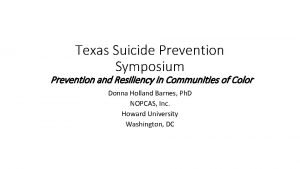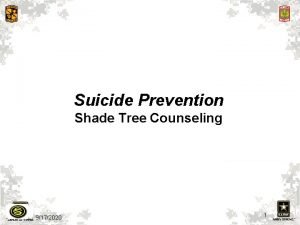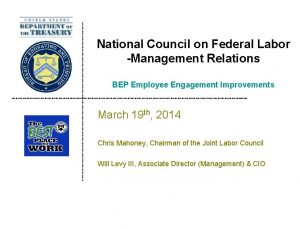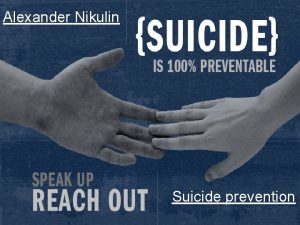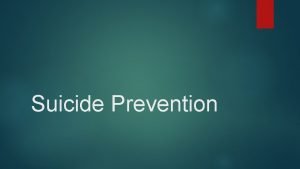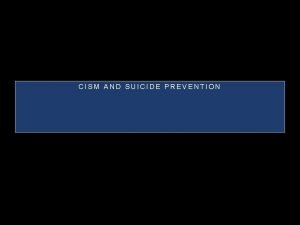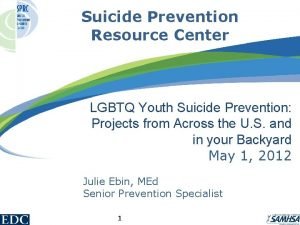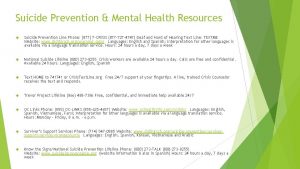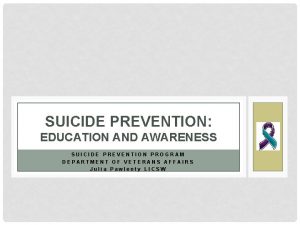Suicide Prevention General Statistics USA Suicide is the









- Slides: 9

Suicide Prevention

General Statistics (USA) Suicide is the 10 th leading cause of death in the US for all ages. (CDC) Every day, approximately 105 Americans die by suicide. (CDC) There is one death by suicide in the US every 13 minutes. (CDC) Depression affects 20 -25% of Americans ages 18+ in a given year. (CDC) Suicide takes the lives of over 38, 000 Americans every year. (CDC)

General Statistics (USA) (con’t) The highest suicide rates in the US are among Whites, American Indians and Alaska Natives. Only half of all Americans experiencing an episode of major depression receive treatment. (NAMI) 80% -90% of people that seek treatment for depression are treated successfully using therapy and/or medication. (TAPS study) An estimated quarter million people each year become suicide survivors (AAS). There is one suicide for every estimated 25 suicide attempts. (CDC) There is one suicide for every estimated 4 suicide attempts in the elderly. (CDC)

Warning Signs Warning signs are indicators that a person may be in acute danger and may urgently need help. • Talking about wanting to die or to kill oneself; • Looking for a way to kill oneself; • Talking about feeling hopeless or having no purpose; • Talking about feeling trapped or being in unbearable pain; • Talking about being a burden to others;

Warning Signs (con’t. ) • Acting anxious, agitated, or reckless; • Sleeping too little or too much; • Increasing the use of alcohol or drugs; • Withdrawing or feeling isolated; • Showing rage or talking about seeking revenge; and • Displaying extreme mood swings.

REACH OUT Reaching out is the most important step to start living mentally well again. Never be afraid to reach out. Here a couple different ways to get help: • Talk with a close friend or family member you trust. • Call a hotline or helpline and talk to a trained helper.

Reach Out (con’t). • Schedule an appointment with a professional therapist. Try e-counseling if that sounds more appealing. • Read others' stories of hope and recovery. Sometimes reading how others have gotten through a difficult time can help you navigate your own tough situation. • Try a support group

Know Where to Turn for Help Reach Out For Help Do you know where to turn for help if you or a friend is having suicidal thoughts? Take some time to familiarize yourself with your own country's, state/province, or local resources. Wheatley Guidance Office: School Psychologist: Mrs. Gluck Sherri Schettini Mrs. Muscarnera Mrs. Schacter Teachers Mrs. Silverstein Mr. Stander Principal/Assistant Principal Ms. Varela Parents Older siblings Trusted family friends

Know Where to Turn for Help USA National Resources: Lifeline 1 -800 -273 -TALK (8255) Crisis Text Line- TEXT “GO” TO 741 -741 Call 911




